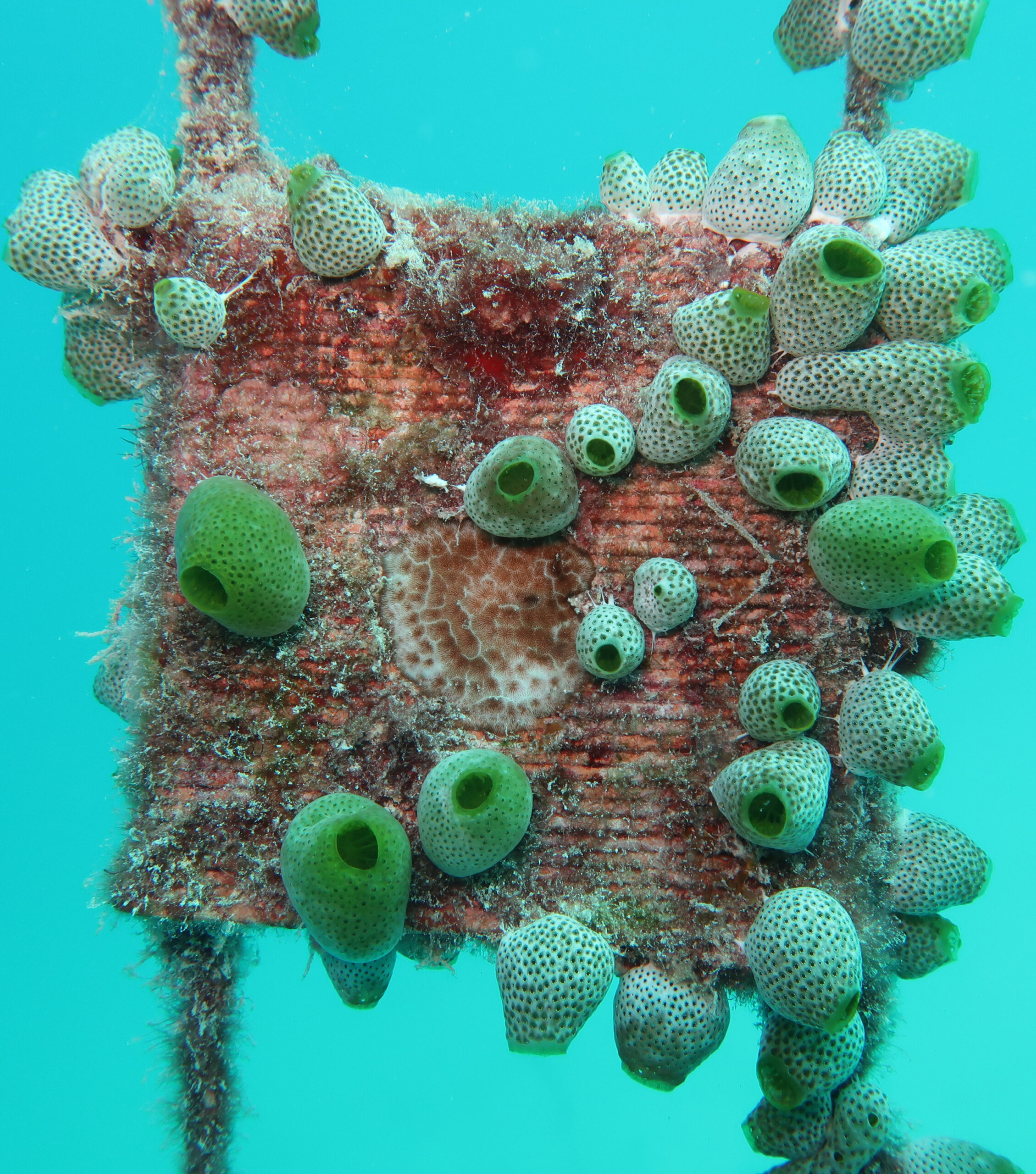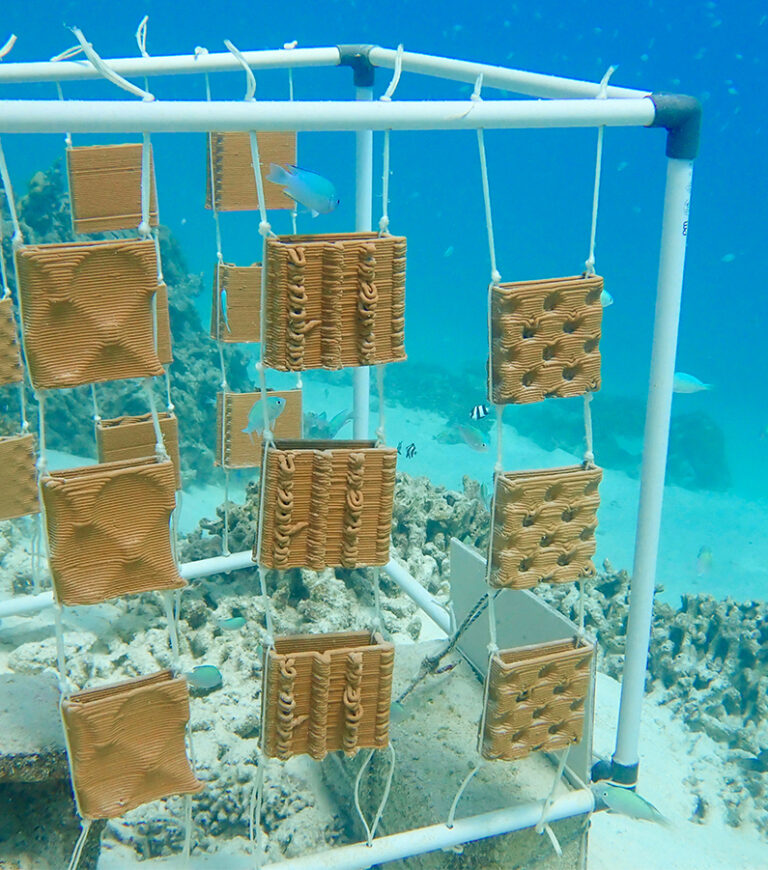Maghoodoo, Faafu Atoll, Maldives
3°04’46.0″N 72°58’04.8″E
Our first field experiment
In December 2019, we installed 98 3D-printed clay tiles with 12 different surface structures in the Maldives. The aim of this experimental setup was to test two hypotheses.
First, that our special 3D-printed terracotta clay is a suitable material for the survival of coral recruits and the growth of a diversity of calcifying organisms. Second, that coral larvae prefer some geometric feature over others.

First data
After Covid-19, we got our first data in April 2021. Initial analyses of the test tiles indicate that coral recruits had mainly survived on vertical surfaces and in depressions. With 30 surviving recruits per squaremeter after 15 months, the results are very promising. A study on natural Maldivian reefs after bleaching events found only 7.4 recruits per squaremeter. Studies in protected areas in Kenia reported 21.4 recruits per square metre, and the highest values were found in the Red Sea with 72 recruits per square metre.
The results overall point to our 3D-printed terracotta clay as a suitable material for rebuilding coral reef structure. Analyses quantifying the biodiversity of other sessile invertebrates on these tiles are ongoing.
A fortunate encounter
The first part of this research was incubated during Ulrike and Marie’s time at the ETH Zürich. Marie was part of a fellowship at the ETH Library Lab, and Ulrike was pursuing her Post Doc at The Environmental Microfluidics Lab.
It was then Hanna’s suggestion to participate in a coral restoration workshop offered by the MaRHE Research Center in the Maldives. This course in the Maldives was the inofficial kick-off of project rrreefs – we installed our first experiment and started making plans. It was here that the team met Phanor Montaya-Maya, director of Corales de Paz, who is now member of our advisory board. Corales de Paz became our main partners in Colombia – an invaluable connection.





